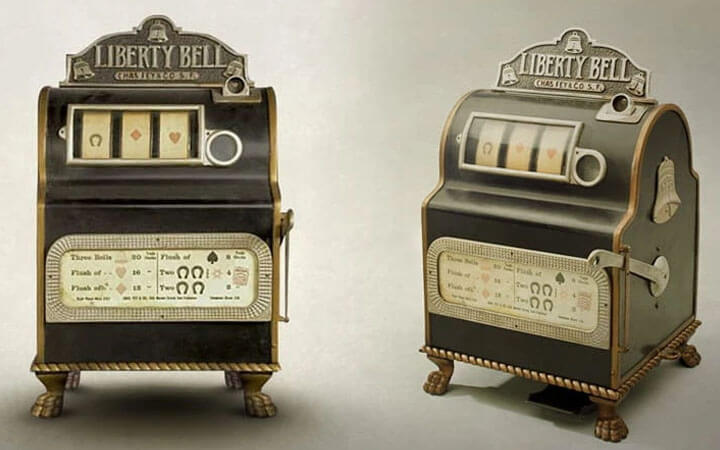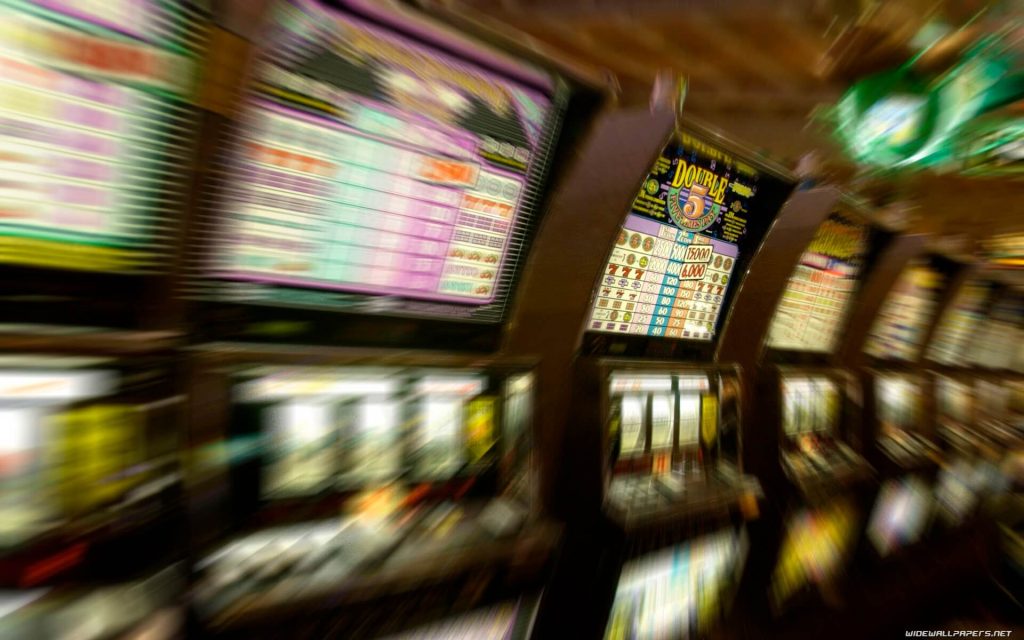Slot machines are more than just flashing lights and the sound of coins dropping—they’re an entire universe where excitement meets technology. From simple lever-operated machines in old bars to the modern slots you can play on your smartphone screen, they’ve become a true icon of entertainment. Behind their magic isn’t just clever programming, but also an ability to grab your emotions, pulling you back to spin those reels again and again. So, let’s dive in and figure out how slot machines came to be, what’s spinning behind their colorful fronts, and how to approach playing them smartly—without extra hopes, but with real benefits.
History of Slot Machines: How Slots Evolved from Liberty Bell to VR
The history of slot machines kicked off over a century ago, and it’s a fascinating saga of how human passion for risk collided with ingenuity. It all started back in 1891 when a company called Sittman and Pitt from New York put together the first machine. Five reels, 50 cards, a nickel in the coin slot—and there you were, pulling a lever to land a poker combination. No cash in your pocket—the prize was handed out right at the bar: a free whiskey or a cigar. As they tell it in History of Slot Machines, they’d take a couple of aces out of the deck to cut the odds of a royal flush in half, giving the house an edge.
The real game-changer came in 1895, thanks to Charles Fey from San Francisco. His Liberty Bell, with three reels, swapped out cards for symbols—horseshoes, hearts, and liberty bells. Line up three bells in a row? Congrats, you hit the jackpot—50 cents! Fey didn’t patent his invention, and pretty soon competitors snatched up his idea.

In the 20th century and in our time
By 1902, the U.S. banned gambling machines, but that only sparked more creativity. In 1907, Herbert Mills rolled out the Operator Bell, replacing bells with fruits—cherries, lemons, plums. That’s also where the BAR symbol came from, inspired by the Bell-Fruit Gum Company logo, which handed out winnings in gum to skirt the law.
Slot machines stayed mechanical until the mid-20th century, when in 1964, Bally introduced Money Honey—the first electromechanical slot. They kept the lever for nostalgia, but the reels now spun with electricity, and payouts jumped up to 500 coins.

In 1976, Fortune Coin blew everyone away with a video slot displayed on a Sony TV screen—goodbye lever, hello buttons. Then, in 1996, WMS Industries added a bonus screen with Reel ‘Em In, turning slot machines into an interactive show.
The mobile revolution began in 2005 with Pub Fruity—a Java-based slot that echoed those old “fruit” machines. But the real boom hit after the iPhone launched in 2007 and the App Store opened in 2008. Developers got direct access to millions of players, and slot machines found a home in our pockets.
How Slot Machines Work: RNG, RTP, and the Secrets of Payouts
RNG
Slot machines aren’t just boxes with pictures—they’re complex systems where every detail is carefully designed. At the heart of every slot is the random number generator (RNG). When you hit “spin,” it spits out a random number that decides which symbols show up on the screen. It’s not magic or a trick—it’s an algorithm running millions of times a second. As explained in OddsChecker, every spin stands on its own—past results don’t affect what’s coming next. Modern RNGs get checked by independent companies like iTech Labs to make sure everything’s fair and square.
RTP
Another big piece is RTP, or return to player percentage. It shows how much a slot pays back on average from all the bets over a long stretch of play. For example, if the RTP is 96%, you’ll get back 96 cents of every dollar—but not in one night, more like over millions of spins. According to PokerNews, online slot machines usually keep RTP between 94% and 98%. Blood Suckers, for instance, shines with 98%, while in Las Vegas casinos, the average is lower—around 91.84%, as noted in Interesting Facts. It’s a guide, not a promise of quick luck.
Volatility
Volatility plays a role too—it’s about how often and how much you win. Slot machines with low volatility, like Starburst (RTP 96.1%), pay out small amounts pretty regularly—a great pick if you want to stretch out the fun. But high volatility, like Mega Moolah (RTP 88% plus jackpot), means rare but big payouts. According to stats from Interesting Facts, small wins (1:1) might drop every 8 spins, while big ones (80:1) come around every 219 spins.
Here’s a list of a few popular slot machines and their features:
- Starburst: RTP 96.1%, low volatility—payouts every 5-10 spins, perfect for relaxed play.
- Mega Moolah: RTP 88% + jackpot, high volatility—rare wins, but a shot at millions.
- Blood Suckers: RTP 98%, medium volatility—a balance of frequency and amounts, about every 15 spins.

Paylines and bonuses add to the excitement. Back in the day, there was just one line, but now you’ve got dozens or even thousands, like in Megaways slots from Big Time Gaming. Bonus rounds—free spins, multipliers—make the game pop. Starburst hooks you with its simplicity and frequent payouts, while Mega Moolah lures you with jackpots that grow with every bet worldwide. Slot machines are a mix of tech and emotion, and understanding how they work is half the battle.
Why Slot Machines Are So Addictive

Slot machines know how to keep you on edge, and it’s not just about the reels. The sound of a win, flashing lights, that moment when two out of three symbols line up—it all hits your emotions dead-on. As they write in History of Slot Machines, developers pick bright colors and tunes on purpose to make your brain say, “Let’s go again!” The “near miss” effect—two bells and an empty spot—keeps hope alive, even when you’re one step from losing.
The number 7 on the reels isn’t random either. In Interesting Facts, they point out it’s been a symbol of luck since ancient times, from religious traditions to modern games, and it grabs you on a gut level. Small payouts help keep you in too—something drops every 8 spins or so, giving you a sense of control. And since 1996, when Reel ‘Em In brought in bonus rounds, slot machines turned into mini-adventures—you’re not just spinning, you’re waiting for a surprise. Want to dig deeper into how games mess with us? Check out the article linked below.
Strategies for Slot Machines: How to Play Smart and Win
Slot machines come with myths like “hot” and “cold” machines—people say if a slot hasn’t paid out in a while, it’s about to hit big. But as PokerNews puts it, that’s nonsense: the RNG doesn’t remember past spins or plan ahead. Still, you can approach the game with a clear head—here are some practical steps to get enjoyment out of slot machines, not disappointment.
5 tips for smart play
- Set a budget: It’s not just an amount for the night—it’s your hard limit. Say you’ve got 20 dollars—decide that’s it, no going past it. It keeps the game fun, not stressful. PokerNews says managing your money is the key that beats any tales about “lucky” slots.
- Check the RTP: Slot machines with 96% or higher give you better odds of hanging in there. Blood Suckers with its 98% is a rare generous one, and Starburst at 96.1% keeps things steady. Checking RTP is easy—look at the slot’s info on a casino site or search it up. It’s not about instant luck—it’s about the long haul.
- Pick your volatility: If your budget’s small, like 10 dollars, go for low volatility—Starburst pays out little bits every 5-10 spins, letting you chill for an hour. Want to chase a jackpot? Mega Moolah with high volatility is your pick, but start with small bets, like 25 cents. It’s a choice between a marathon and a sprint, as OddsChecker explains.
- Test in demo mode: Demo mode is your best pal before betting real cash. It’s not just free play—it’s a way to see how the slot behaves. With Blood Suckers, free spins often double your bet, while Starburst pays smooth and steady. Try 20-30 spins to get the vibe.
- Don’t jump at jackpots right away: Progressive slot machines like Mega Moolah promise millions, but the odds of hitting the top prize range from 1 in 5,000 to 1 in 34 million, according to Interesting Facts. Use casino bonuses instead—free spins or welcome credits—so you’re not risking your own cash.
And always look at the paytable before you start. In Starburst, three stars beat out fruits in value, while in Mega Moolah, it’s all about the bonus wheel. It’s like a map before a trip—you know where you’re headed. Slot machines aren’t about “cracking the code”—they’re about balance. You can’t outsmart the RNG, but you can make the game comfy and enjoyable.
Slot Machines: Wrap-Up and What’s Next
Slot machines have come a long way—from mechanical boxes with levers to digital systems where every detail, from RNG to bonuses, is polished to perfection. They rake in huge cash for casinos: over $34 billion a year in the U.S. alone. Their history is a blend of tech and the human urge for excitement, and the future’s looking bright. High-speed 5G, virtual reality, and new mechanics like Megaways are already shaking things up—in 2025, VR slots are being tested in Las Vegas, promising a whole new level of immersion.
Knowing how slot machines work isn’t a trick to beat the system—it’s a chance to play with awareness. Want a chill session? Grab slots with high RTP and low volatility. Chasing a dream? Jackpot slots are there for the patient. The key is keeping a cool head—it’s entertainment, not a race for riches. Time to unpack this phenomenon and find your own way with slot machines!
FAQ
RNG is the engine of slots, making every spin random. According to History of Slot Machines, it pumps out numbers millions of times a second, and your outcome hinges on when you hit the button. No way to guess it—just pure luck at work.
RTP is the return percentage, showing how much a slot gives back on average. With Blood Suckers at 98%, you’d get 98 cents back from a dollar, but that’s over millions of spins. It’s a hint for picking generous slot machines.
Seven’s a luck symbol from way back, from traditions to games. They add it to boost that “almost won” feeling—it hooks you deep down.
With $10 and an hour, go low volatility—Starburst pays every 5-10 spins. Want a jackpot? Mega Moolah’s high volatility needs at least $20 and some patience.
If you’re into the thrill—sure, but the odds are slim. Interesting Facts notes top prize chances range from 1 in 5,000 to 1 in 34 million. Better to start with casino bonuses, not your own cash.
